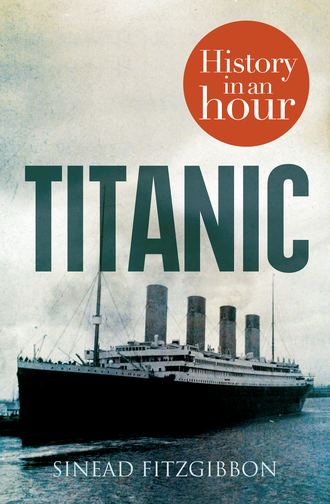
Titanic: History in an Hour
Originally, the list of seven officers, from Chief Officer down to Sixth, was as follows: William Murdoch, Charles Lightoller, David Blair, Herbert Pitman, Joseph Boxhall, Harold Lowe and James Moody.
However, with the Olympic’s crew at a loose end, the White Star Line decided to bring her experienced Chief Officer, Henry Wilde (pictured below), aboard Titanic for her maiden voyage.

Chief Officer Henry Wilde
This last-minute re-organization of crew meant that Murdoch and Lightoller were demoted to First and Second Officer respectively, while David Blair was removed from the line-up altogether.
Under orders to leave the ship immediately, Blair, in his haste, mistakenly took the key to his locker with him. Unfortunately, his locker contained the binoculars that were to be distributed among the crow’s nest lookouts. This meant that the lookouts would be forced to work unaided, which made their task of spotting icebergs in the distance infinitely more difficult.
This would be the first in a long chain of unfortunate events which would culminate, four days later, in the sinking of a supposedly ‘unsinkable’ ship.
An Inauspicious Beginning?
Just after noon on Wednesday 10 April 1912, with all her passengers and crew safely on board, the gang-planks were drawn up and RMS Titanic set sail from Southampton. As she was pulled from her berth by the tugboat Vulcan, throngs of people gathered on the dock to cheer her off, while hundreds of passengers congregated on her decks, waving farewell to the crowds below.
Tentatively at first, the colossal ship turned to port side and began to make her way down the narrow corridor of water, which gave way to the River Test, and which would in turn carry Titanic into the harbour. Slowly gathering speed, she glided past a number of ships, including the Oceanic and the New York, which were moored in the channel.
Titanic’s bulk made the task of manoeuvring the mammoth vessel down the narrow strait difficult – at one point there was hardly eighty feet between Titanic and the stationary vessels. Spectators looked on nervously, fearing a collision. However, as Titanic’s bow drew level with that of the New York, it seemed the danger had passed.
Then, quite without warning, the thick ropes which tethered the New York
Конец ознакомительного фрагмента.
Текст предоставлен ООО «ЛитРес».
Прочитайте эту книгу целиком, купив полную легальную версию на ЛитРес.
Безопасно оплатить книгу можно банковской картой Visa, MasterCard, Maestro, со счета мобильного телефона, с платежного терминала, в салоне МТС или Связной, через PayPal, WebMoney, Яндекс.Деньги, QIWI Кошелек, бонусными картами или другим удобным Вам способом.
Приобретайте полный текст книги у нашего партнера: